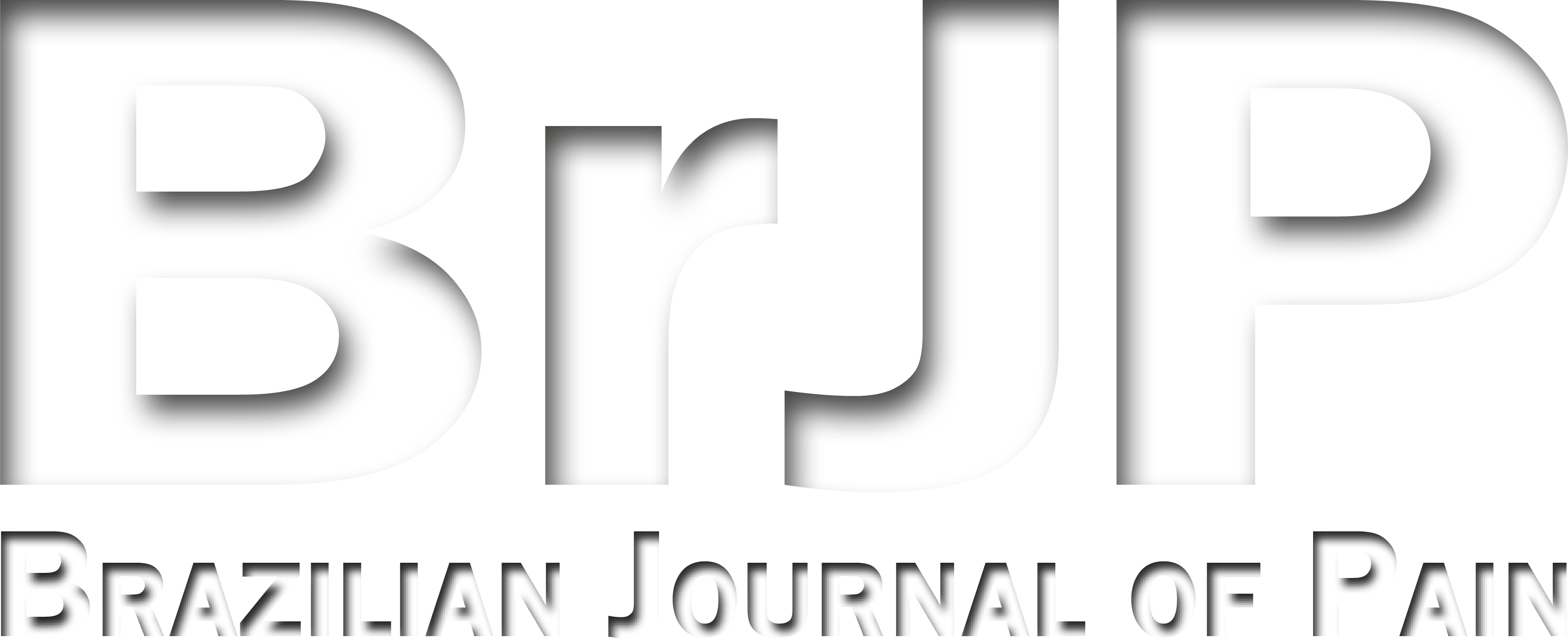Prevalence of musculoskeletal pain in body segments in Judo and Jiu-jitsu athletes
Prevalência de dor musculoesquelética nos segmentos corporais em atletas de Judô e Jiu-jitsu
Luciana Crepali Lunkes; Arisleny Nayara Canestri Reis; Raul Canestri; Renato Carvalho Vilella
Abstract
Keywords
Resumo
JUSTIFICATIVA E OBJETIVOS: Persiste uma lacuna notável na compreensão da prevalência da dor e das lesões musculoesqueléticas nos esportes de combate. Este estudo oferece uma exploração abrangente das regiões anatômicas mais afetadas. Tal investigação é fundamental para refinar estratégias clínicas envolvendo medidas preventivas e intervenções fisioterapêuticas.
MÉTODOS: Estudo observacional transversal. Foram incluídos indivíduos com idade igual ou superior a 18 anos, praticantes de modalidades esportivas de combate, de ambos os sexos e capazes de responder ao questionário. Os dados foram analisados por estatística descritiva e o teste Qui-quadrado.
RESULTADOS: A amostra final foi composta por 71 atletas. Das atletas do sexo feminino, 12,65% praticavam Judô e 21,51% praticavam Jiu-jitsu, enquanto 26,58% do sexo masculino praticavam Judô e 39,24% Jiu-jitsu. A média de idade foi de 31,14±11,75 anos, e índice de massa corporal de 27,69 kg/ m2 (±5,31). O tempo médio de prática foi de 8±10,59 anos. As regiões mais afetadas pela dor nos últimos 12 meses foram coluna lombar (90%), joelhos (90%) e punhos/mãos (60%). O Judô feminino apresentou índice significativo de dor nos últimos 12 meses em membros superiores, sendo o pescoço identificado como o maior responsável pela limitação das atividades. Nos últimos 7 dias, colunas torácica e lombar foram mais significativas. No Jiu-jitsu feminino, em 12 meses e 7 dias, tornozelo/pé foram mais afetados quando comparado ao masculino, e os joelhos foram os maiores responsáveis pela limitação das atividades.
CONCLUSÃO: Uma descrição abrangente das principais regiões afetadas por dor e lesões musculoesqueléticas é de fundamental importância no desenvolvimento de estratégias de prevenção e tratamento fisioterapêutico.
Palavras-chave
References
1 Barley OR, Harms CA. Profiling combat sports athletes: competitive history and outcomes according to sports type and current level of competition. Sports Med Open. 2021;7(1):1-12.
2 Barley OR, Chapman DW, Abbiss CR. The current state of weight-cutting in combat sports. Sports. 2019;7(5):123.
3 Turnagöl HH, Koşar ŞN, Güzel Y, Aktitiz S, Atakan MM. Nutritional considerations for injury prevention and recovery in combat sports. Nutrients 2022;14(1):53.
4 Kowalczyk M, Zgorzalewicz-Stachowiak M, Błach W, Kostrzewa M. Principles of training as an organised form of physical activity for children. Int J Environ Res Public Health. 2022;19(4):1929.
5 Nicolini AP, Penna NA, Oliveira GT, Cohen M. Epidemiology of orthopedic injuries in Jiu-Jitsu athletes. Acta Ortop Bras. 2021;29(1):49-53.
6 Christopher S, Tadlock BA, Veroneau BJ, Harnish C, Perera NKP, Knab AM, Vallabhajosula S, Bullock GS. Epidemiological profile of pain and non-steroid anti-inflammatory drug use in collegiate athletes in the United States. BMC Musculoskelet Disord. 2020;21(1):561.
7 Santos Silva Lopes J, Monteiro de Magalhães Neto A, Oliveira Gonçalves LC, Lourenço Alves PR, Castilho de Almeida A, Marlise Balbinotti Andrade C. Kinetics of muscle damage biomarkers at moments subsequent to a fight in Brazilian Jiu-Jitsu practice by disabled athletes. Front Physiol. 2019;10:1055.
8 von Elm E, Altman DG, Egger M, Pocock SJ, Gøtzsche PC, Vandenbroucke JP; STROBE Initiative. The Strengthening the Reporting of Observational Studies in Epidemiology (STROBE) Statement: guidelines for reporting observational studies. Int J Surg. 2014;12(12):1495-9.
9 Mesquita CC, Ribeiro JC, Moreira P. Portuguese version of the standardized Nordic musculoskeletal questionnaire: cross cultural and reliability. J Public Health (Bangkok) 2010;18(5):461-6.
10 Triki M, Koubaa A, Masmoudi L, Fellmann N, Tabka Z. Prevalence and risk factors of low back pain among undergraduate students of a sports and physical education institute in Tunisia. Libyan J Med. 2015;10(1):26802.
11 Moriarty C, Charnoff J, Felix ER. Injury rate and pattern among Brazilian jiu-jitsu practitioners: a survey study. Phys Ther Sport. 2019;39:107-13.
12 Goes RA, Lopes LR, Cossich VRA, de Miranda VAR, Coelho ON, do Carmo Bastos R, Domenis LAM, Guimarães JAM, Grangeiro-Neto JA, Perini JA. Musculoskeletal injuries in athletes from five modalities: a cross-sectional study. BMC Musculoskelet Disord. 2020;21(1):122.
13 Stephenson C, Rossheim ME. Brazilian Jiu Jitsu, and Mixed Martial Arts Injuries Presenting to United States Emergency Departments, 2008-2015. J Prim Prev. 2018;39(5):421-35.
14 Cynarski WJ, Słopecki J, Dziadek B, Böschen P, Piepiora P. Indicators of targeted physical fitness in and Jujutsu-preliminary results of research. Int J Environ Res Public Health. 2021;18(8):4347.
15 Brown DA, Grant G, Evans K, Leung FT, Hides JA. The association of concussion history and symptom presentation in combat sport athletes. Phys Ther Sport. 2021;48:101-8.
16 Hawrylak A, Chromik K, Barczyk-Pawelec K, Demczuk-Włodarczyk E. Assessment of spine mobility and a level of pressure pain threshold in Contestants. Sci Sports. 2019;34(4):274-5.
17 McDonald AR, Murdock FA Jr, McDonald JA, Wolf CJ. Prevalence of injuries during Brazilian Jiu-Jitsu training. Sports (Basel). 2017;5(2):39.
18 Eustaquio JMJ, Rabelo AL, Debieux P, Kaleka CC, Barbosa O. Knee injuries prevalence In Brazilian Jiu-Jitsu: epidemiological study. Acta Ortop Bras. 2021;29(6):327-30.
19 Zhang H, Bi Y, Hou X, Lu X, Tu Y, Hu L. The role of negative emotions in sex differences in pain sensitivity. Neuroimage. 2021;245:118685.
20 Petrisor BA, Del Fabbro G, Madden K, Khan M, Joslin J, Bhandari M. Injury in Brazilian Jiu-Jitsu training. Sports Health 2019;11(5):432-9.
21 Coswig VS, Gentil P, Bueno JCA, Follmer B, Marques VA, Del Vecchio FB. Physical fitness predicts technical-tactical and time-motion profile in simulated and Brazilian Jiu-Jitsu matches. Peer J. 2018;6:e4851.
Submitted date:
09/21/2023
Accepted date:
01/29/2024


